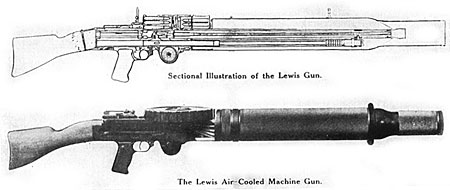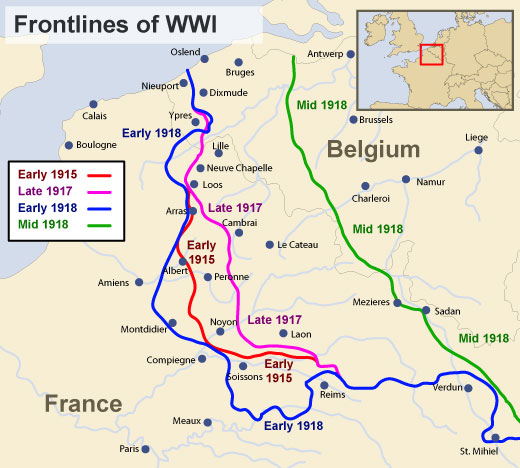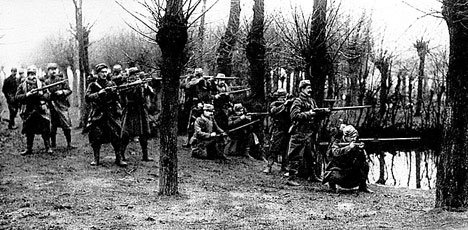Battles of World War I
World War I was a bloody conflict. By the end of the war, almost 9 million soldiers had died. World War I was the beginning of more deadly modern warfare. In addition to the U-boats, machine guns, tanks, and poisonous gas were introduced. Soldiers also dug trenches to provide cover as they fought. The airplane technology, introduced by the Wright brothers during the previous century, was now advanced enough to be used by the military to drop bombs.

The first U.S. attack was by the Navy, who used convoy power to attack German U-boats with torpedoes while protecting ships carrying much-needed supplies to Great Britain’s naval forces. The convoy method also prevented the Germans from sinking as many Allied boats.
The United States did not commit to the ground attack until the Bolsheviks took control of Russia. When Vladimir Lenin declared a Russian peace with Germany and left the Allied forces, the U.S. came in to support Great Britain and France. The U.S. helped the French save Paris at the battle of Château-Thierry, after the Germans had advanced deeply into France.

The United States began to use tanks to break German lines in August of 1918, and continued to pound at weak German lines during the battle of St. Mihiel in August of 1918. By late September, Allied forces had pushed Germany back to the German border during the 7-week Battle of the Argonne Forest. A cease-fire was declared on November 11, 1918. November 11th would later become the nationally celebrated holiday, Veteran’s Day.
